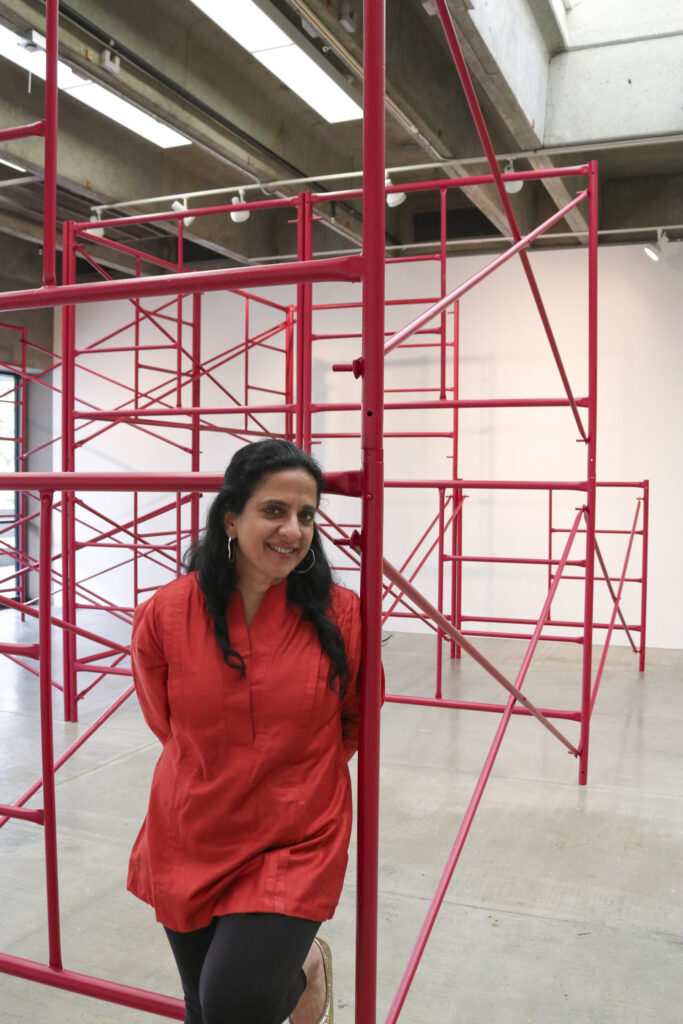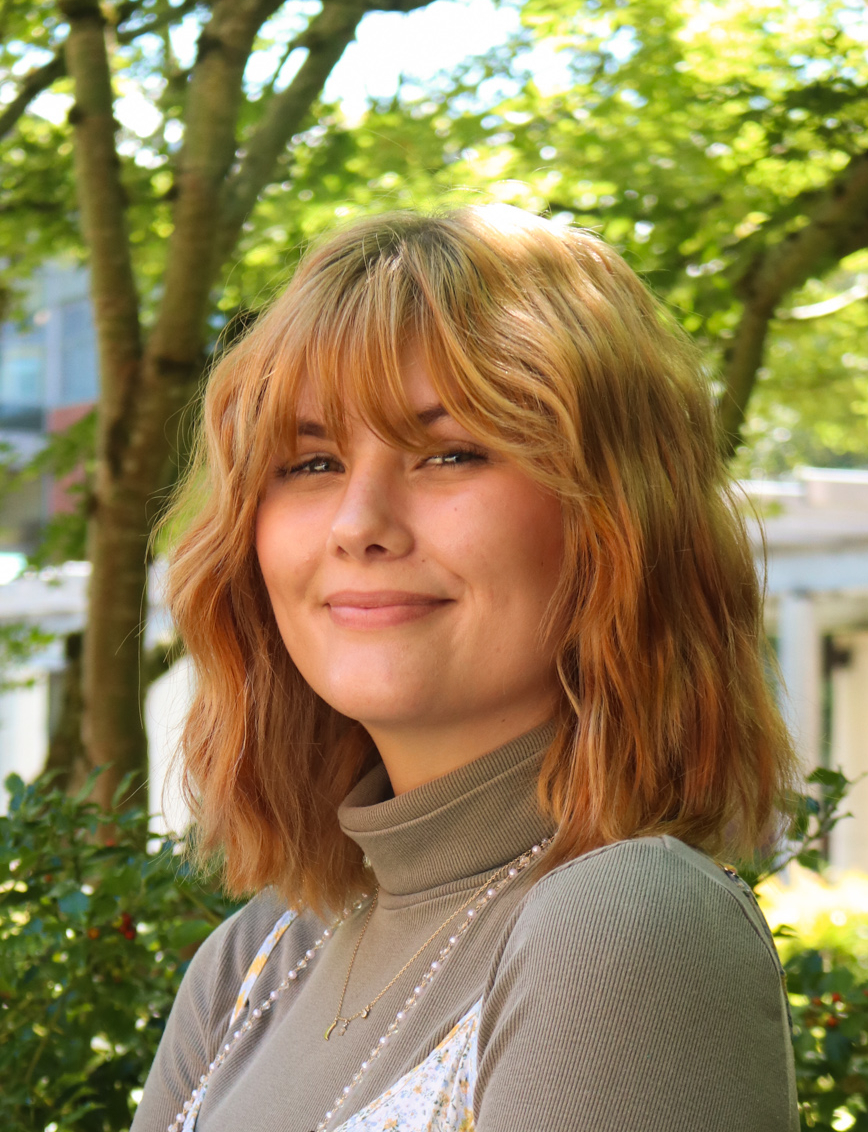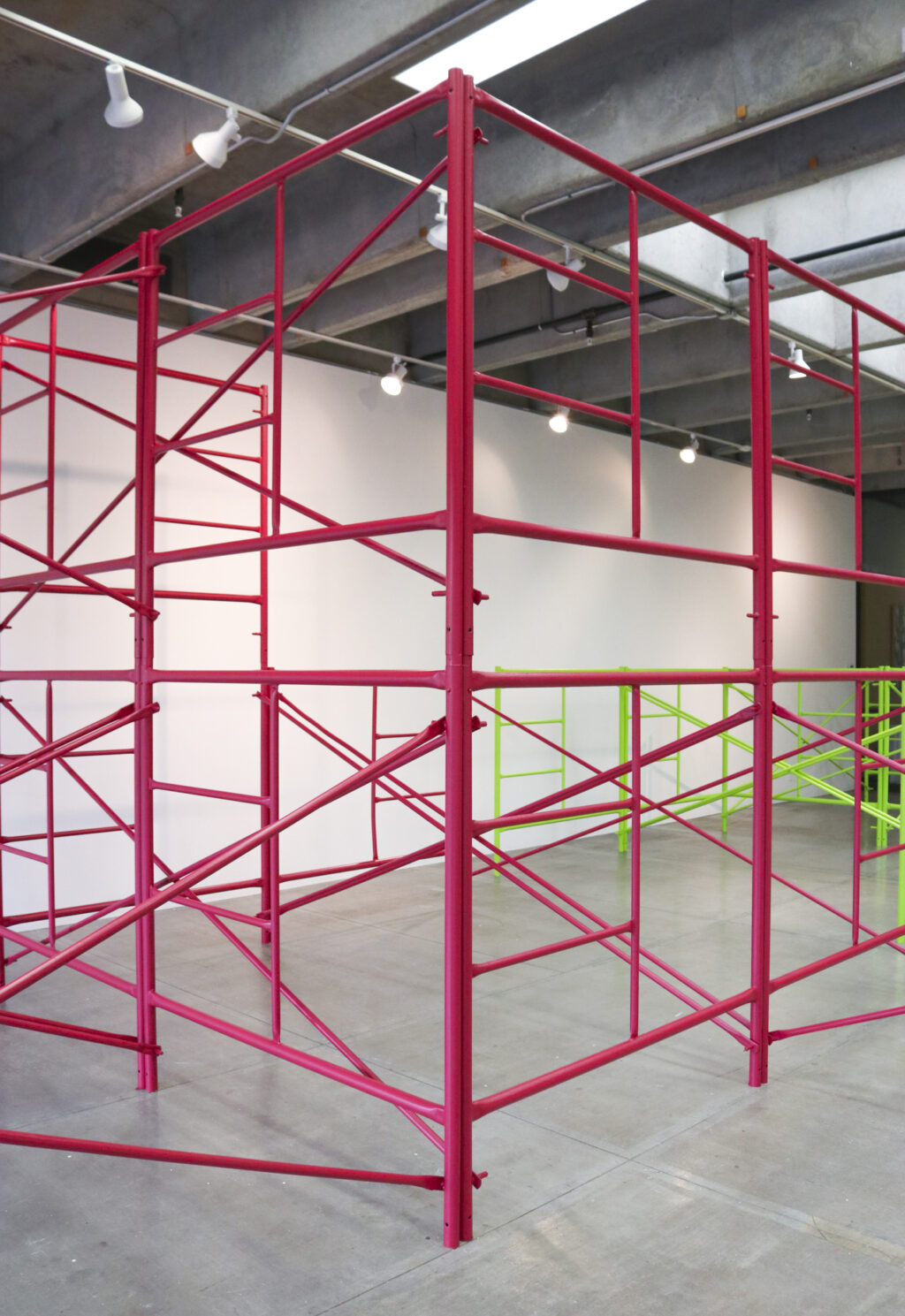WSU Vancouver professor of fine arts Avantika Bawa’s latest installation, “Charged Voids,” is an immersive display of color, modularity and structure that functions as an interactive exhibit, inviting viewers to engage with its space by climbing, crawling and otherwise physically connecting with the installation.
“Charged Voids” is located in one of Portland Community College Sylvania’s original 1968 brutalist buildings, exemplified by sprawling concrete walkways and simplistic designs. What she calls her “cheeky response to brutalism,” Bawa infuses the gallery with a sense of playfulness through her use of bright magenta, teal, blue and neon green.

“I wanted there to be a burst of color to make this space more energized and welcoming,” Bawa said. “I take a scaffold, and then the question is: how can I change the work by changing the arrangement of the scaffold, the color of the scaffold, and the scale of the scaffold, in response to where I’m placing it?”
Other focal points of Bawa’s scaffolding series are movement and the human form. Bawa encourages viewers to explore the installation by scaling across the scaffolds or lying underneath them.
“With an installation, you’re supposed to walk around it, and when people start climbing through it, for me, that is a testimony of its success or the fact that it’s doing something. That embraces your sense of tactility and your desire to do something kinesthetic,” Bawa said.
Christine Weber, director of the North View Gallery, reflects on the interactive experience of this installation in an essay titled, “Charged Voids,” written for the 2022 North View Gallery brochure.
“This attempt resonates with the everyday poetry that Bawa exposes in the functional form of the scaffold, a form that allows humans to reach new heights, that makes back-breaking labor possible and that can frame and re-frame spaces,” Weber wrote.
The installation lives within the realm of brutalist architecture, so whilst thinking of a name for her exhibit, Bawa settled on “Charged Voids” in reference to how onlookers infuse their energy into the empty structural spaces as they walk through the gallery by “charging the voids.”
“Charged voids is a term that was used to describe the open spaces outside interiors, the open hallways of brutalist buildings,” Bawa said. “When I brought the scaffolds to the space and we were walking around, I knew with this installation, I wanted the scaffolds to potentially seep outside into that open walkway space. That’s something that the gallery has never done before.”
The asymmetric bars fill the gallery with a dynamic rhythm that spills out onto the building’s exterior patio. Whether viewers choose to meditate, write poetry or test the integrity of the scaffolds, the openness of the space invites the spectator to build an experience of their own.
“I’m playful, which people engaging will witness at some point. I’m like, ‘have I just made a glorified designer jungle gym?’ Maybe I have, and so be it,” Bawa said.
“I wanted there to be a bust of color to make this place more energized and welcoming.” – Avantika Bawa
PCC Sylvania faculty member Myra Day recalls spending eight hours a day hand painting the teal and green scaffolds that line the west wall. Day described this piece as an ethereal structure that prompts curious spectators to reflect on the installation’s meaning.
“It’s interesting to see people react to it in a way that’s like, ‘This is the scaffolding, when is the piece going up?’” Day said.
Noah Matteucci, a fine arts technician at WSU Vancouver, is working in collaboration with Bawa to integrate his own installation, “Gridy: Prints on Paper,” into “Charged Voids.” Running from Oct. 8 to Oct. 22, Matteucci’s addition uses CMYK codes, a method of color coding used for printed materials, to create relief prints in response to the scaffolds.
“He’s charging up the space in another way. He uses waffle plate, then he places all these wooden blocks on them, and that’s how he makes them. He broke down the CMYK codes [of the scaffolds] and recreated them by hand. Each block is hand-printed,” Bawa said.
“Charged Voids” is open until Oct. 28, and features several artist talks, installations and discussion panels. All events are free and open to the public. The North View Gallery is located at 1200 SW 49th Avenue in Portland, and is open Monday through Friday 8 a.m. to 4 p.m., and Saturday from 10 a.m. to 4 p.m.

Bethanie is a senior studying environmental and ecosystem science at WSU Vancouver.

Woohoo! Great job Bethanie!!!
Thank you so much, Noah!